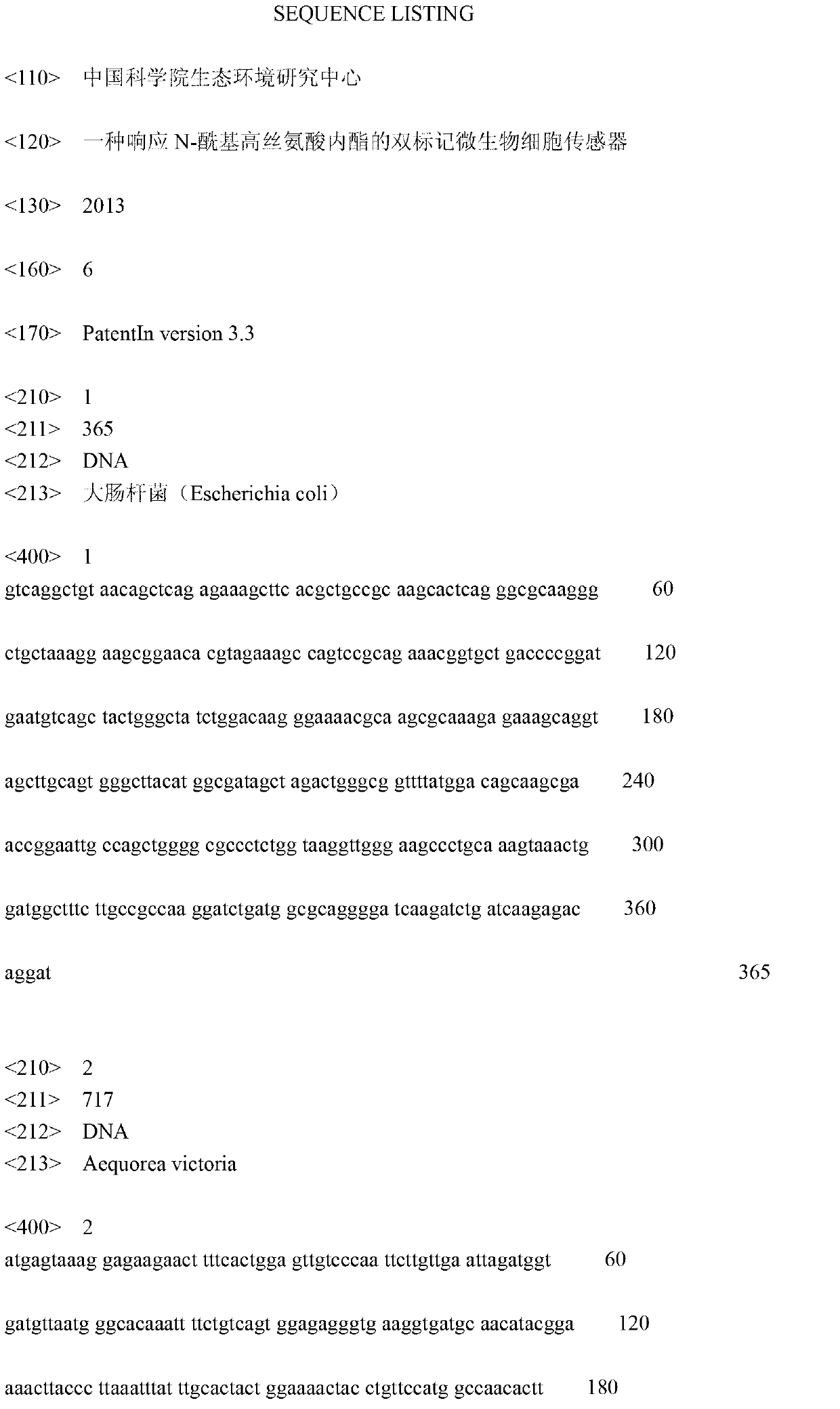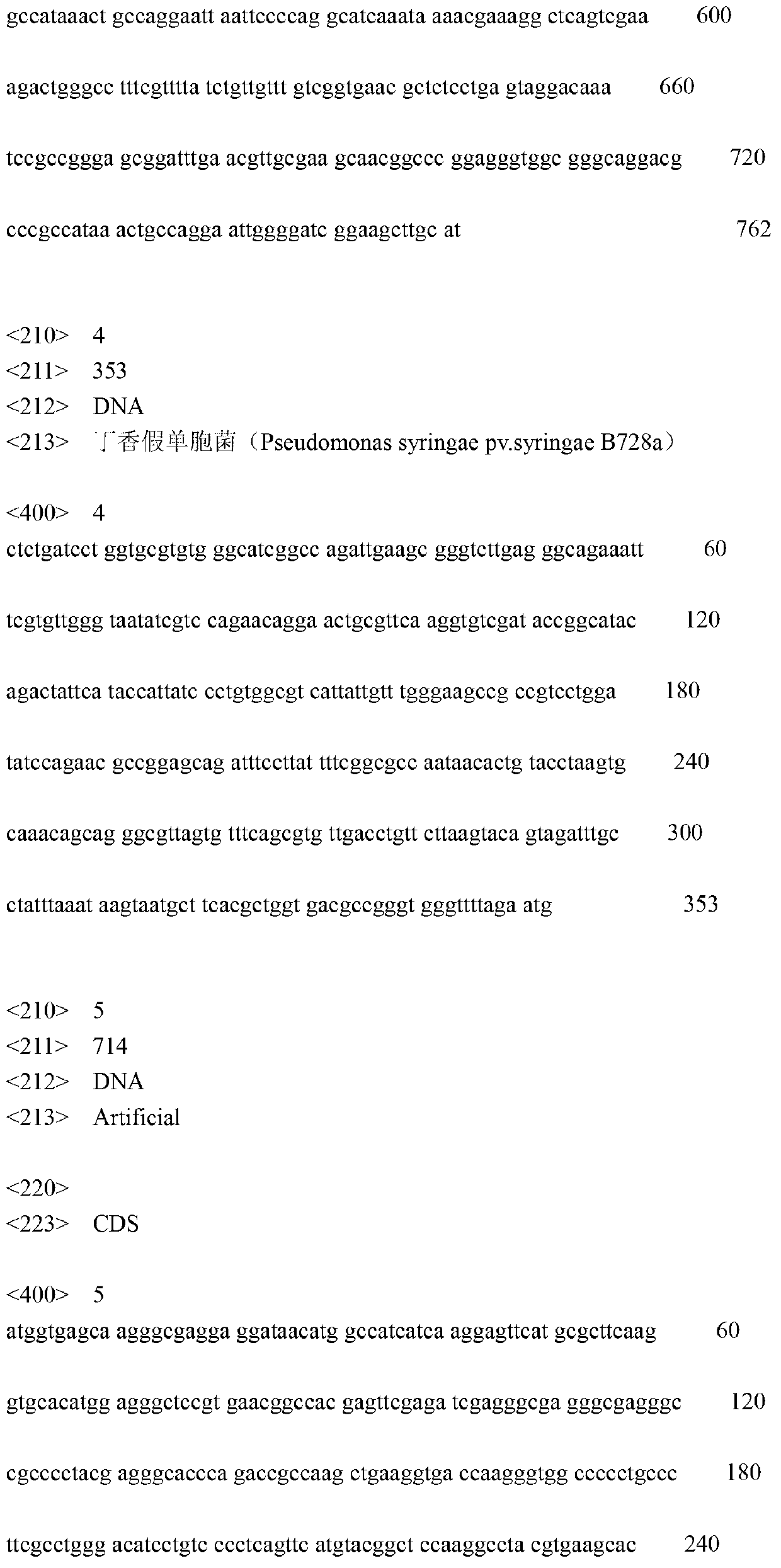Double-tagging microbial cell biosensor for detecting N-acyl homoserine lactone
A technology of acyl homoserine lactone and microbial cells, applied in the field of double-labeled microbial cell sensors
- Summary
- Abstract
- Description
- Claims
- Application Information
AI Technical Summary
Problems solved by technology
Method used
Image
Examples
Embodiment Construction
[0021] The following examples will further illustrate the present invention
[0022] Step 1: Inoculate a single colony of sensor cells in a 20 mL Erlenmeyer flask, add ampicillin to a final concentration of 50 μg / mL, 37°C, 200 r min -1 Overnight culture;
[0023] Step 2: Take 2 mL of the above bacteria solution into 18 mL of fresh LB medium, add ampicillin to a final concentration of 50 μg / mL, 37°C, 200 rpm -1 Grow to OD 600 =0.6;
[0024] Step 3: Add the 3OC6-HSL solution dissolved in acetonitrile to the culture in the second step, so that the final concentrations are 0, 10, 50, 100, 1000 nmol / L, 37°C, 200 r min -1 Continue to induce culture;
[0025] Step 4: During the 24-hour induction period, take 180 μL of the culture in the third step every 3 hours to a 96-well plate, and use a Varioskan Flash full-wavelength scanning multifunctional microplate reader to detect its green fluorescence under 488 nm excitation light. Emission intensity at 510 nm and cherry red fluore...
PUM
 Login to View More
Login to View More Abstract
Description
Claims
Application Information
 Login to View More
Login to View More - R&D
- Intellectual Property
- Life Sciences
- Materials
- Tech Scout
- Unparalleled Data Quality
- Higher Quality Content
- 60% Fewer Hallucinations
Browse by: Latest US Patents, China's latest patents, Technical Efficacy Thesaurus, Application Domain, Technology Topic, Popular Technical Reports.
© 2025 PatSnap. All rights reserved.Legal|Privacy policy|Modern Slavery Act Transparency Statement|Sitemap|About US| Contact US: help@patsnap.com



